Estimated reading time: 18 minutes
In the vast expanse of the wilderness, where modern comforts are left behind, the flickering glow of a fire becomes more than just warmth and light. It becomes a symbol of survival, a source of sustenance, and a companion in the solitude of nature.
The art of fire building is an essential skill for any adventurer or outdoor enthusiast, and knowing the various methods to ignite and sustain a fire can make all the difference in the wild.
In this article, we will delve into the different ways to build a fire in the wilderness, exploring techniques used as traditional methods for generations.
Want to save this post for later? Click Here to Pin It On Pinterest!
The Basics of Fire Building
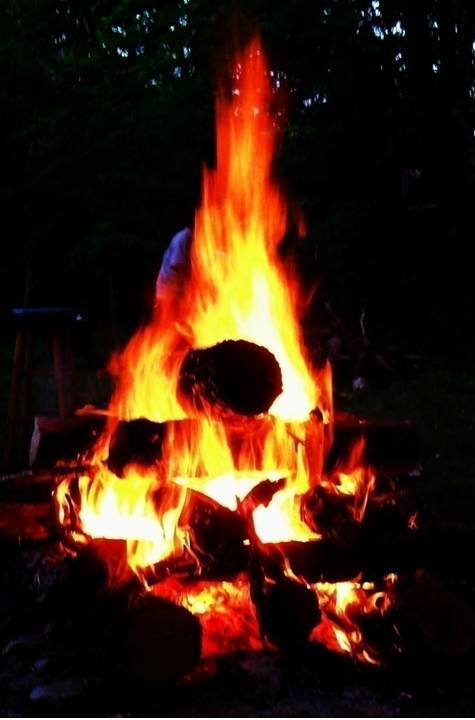
Fire building is an essential skill in the wilderness, providing warmth, light, and a means of cooking food. To successfully build a fire, it's important to understand the three necessary components: fuel, air, and ignition.
Fuel
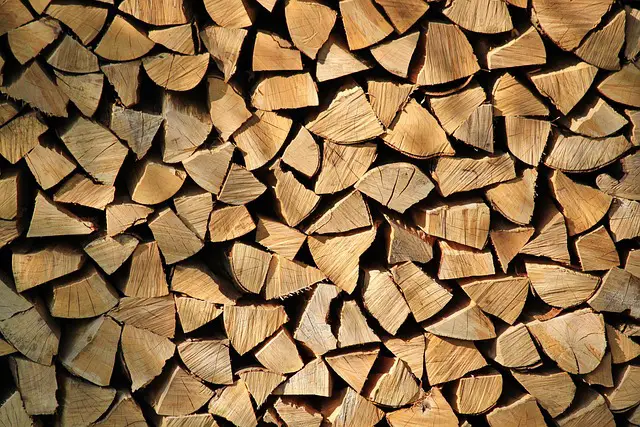
Fuel refers to the materials that will sustain and feed the fire. In a typical fire, the fuel consists of three main types: tinder, kindling, and fuelwood.
Tinder
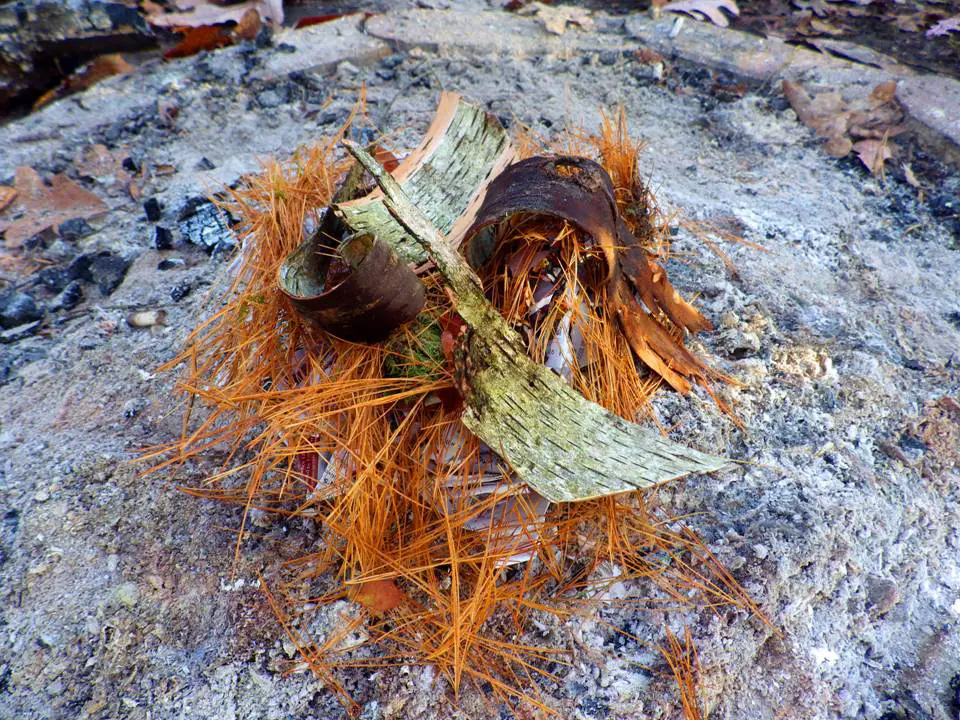
Tinder is the initial material used to ignite the fire. It needs to be highly combustible and easily catch fire with a small spark or flame. Examples of tinder include dry leaves, grass, bark shavings, or cotton balls coated in petroleum jelly.
Kindling
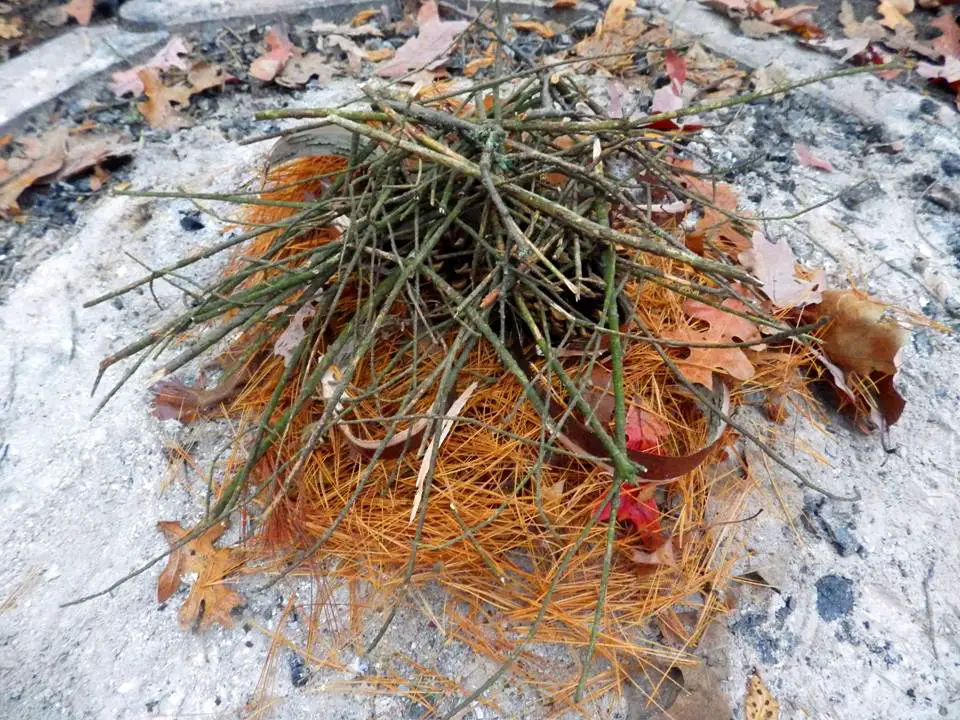
Kindling consists of small sticks or twigs that catch fire easily and provide the initial sustenance for the flames. It should be dry and have a range of sizes, from toothpick-sized twigs to finger-thick branches.
Fuelwood
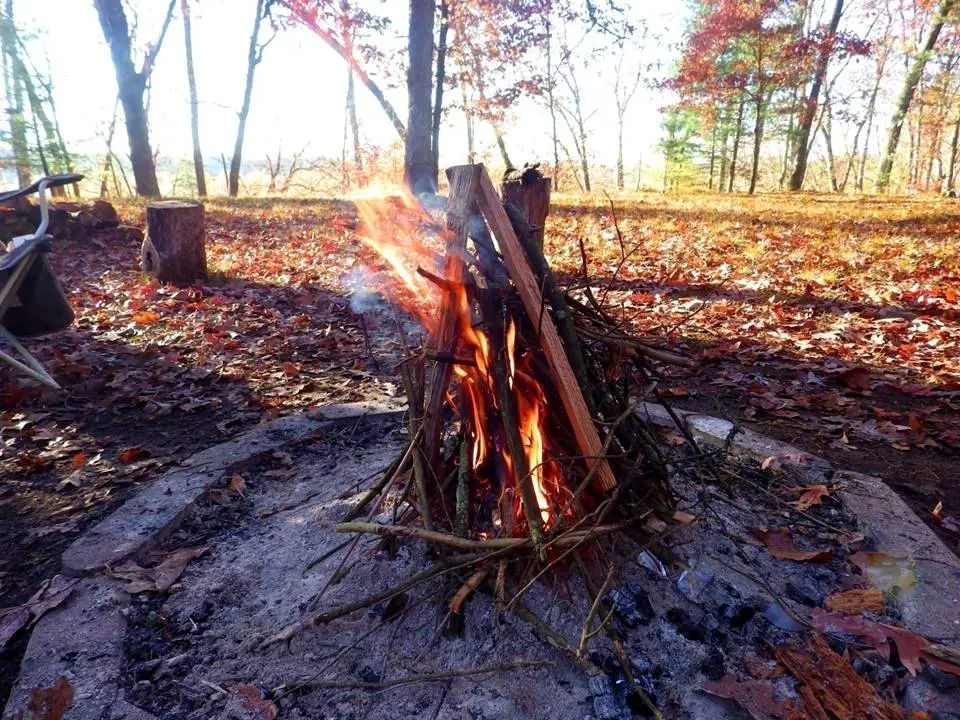
Fuelwood is the larger logs and branches that maintain the fire once it's established. These should be gradually added to the fire as it grows. It's important to use dry, seasoned wood to ensure efficient burning.
Air
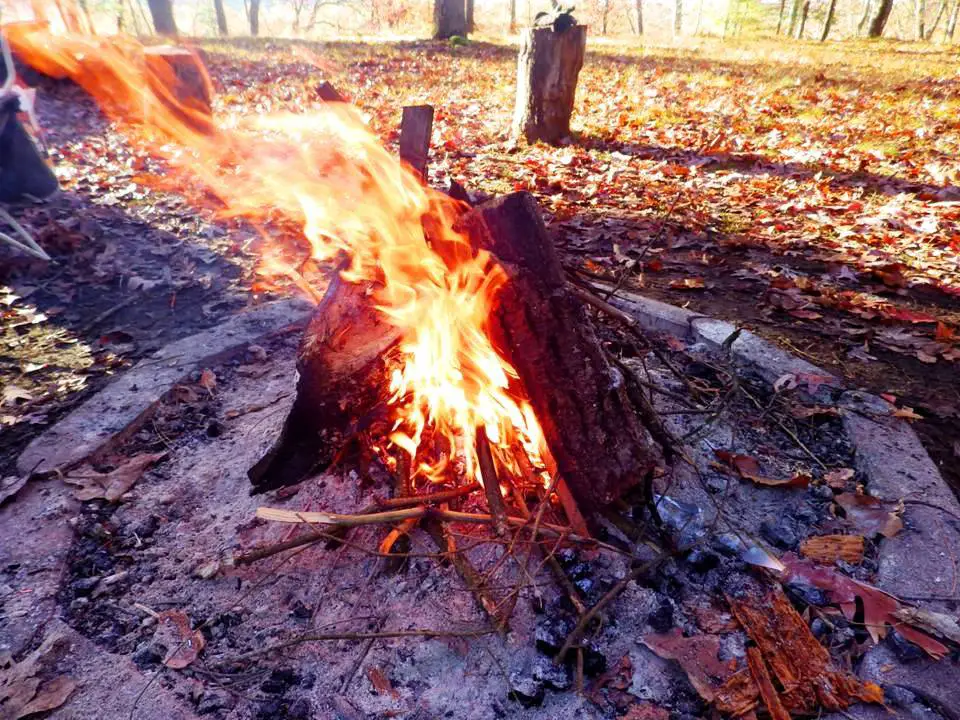
Air, specifically oxygen, is a vital component of fire. Adequate airflow allows the fire to breathe and burn efficiently. When building a fire, it's crucial to ensure proper ventilation so that oxygen can reach the flames.
To maximize airflow, consider the following techniques:

- Leave enough space between logs or fuelwood to allow air circulation.
- Arrange the fuel in a way that allows oxygen to reach the base of the fire.
- Avoid building the fire in enclosed spaces that restrict airflow.
Insufficient airflow can cause smoky fires or extinguish the flames altogether. Be sure to protect the initial fire from collapse to avoid this situation.
Ignition
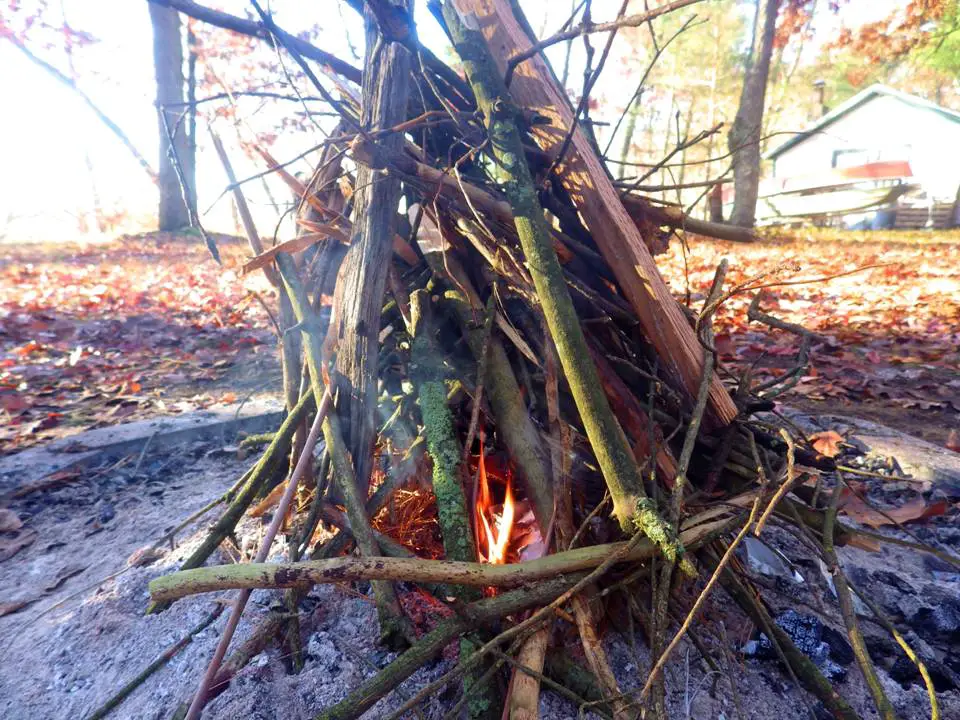
Ignition is the process of starting a fire. There are various methods to ignite a fire, including:
Matches: Waterproof matches or strike-anywhere matches are commonly used for fire starting. Ensure you have a reliable and dry source of matches.
Lighters: Disposable lighters or refillable gas lighters provide a convenient and easily controllable flame. Keep them protected from moisture.
Fire Starters: Commercial fire starters, such as fire-lighting cubes or compressed sawdust blocks infused with wax, offer a reliable and efficient way to ignite your fire.
Natural Ignition: Utilizing natural methods like friction (fire plow, hand drill), sparks from flint and steel, or focusing sunlight through a magnifying glass can also initiate ignition without relying on external tools.
The Best Ways to Build Your Fire in the Wilderness
Each fire-building method carries its unique benefits, and understanding these can empower you to adapt to varied wilderness conditions. What's more, these techniques do not require extensive prior experience and can be mastered by beginners with practice.
1. The Teepee Fire
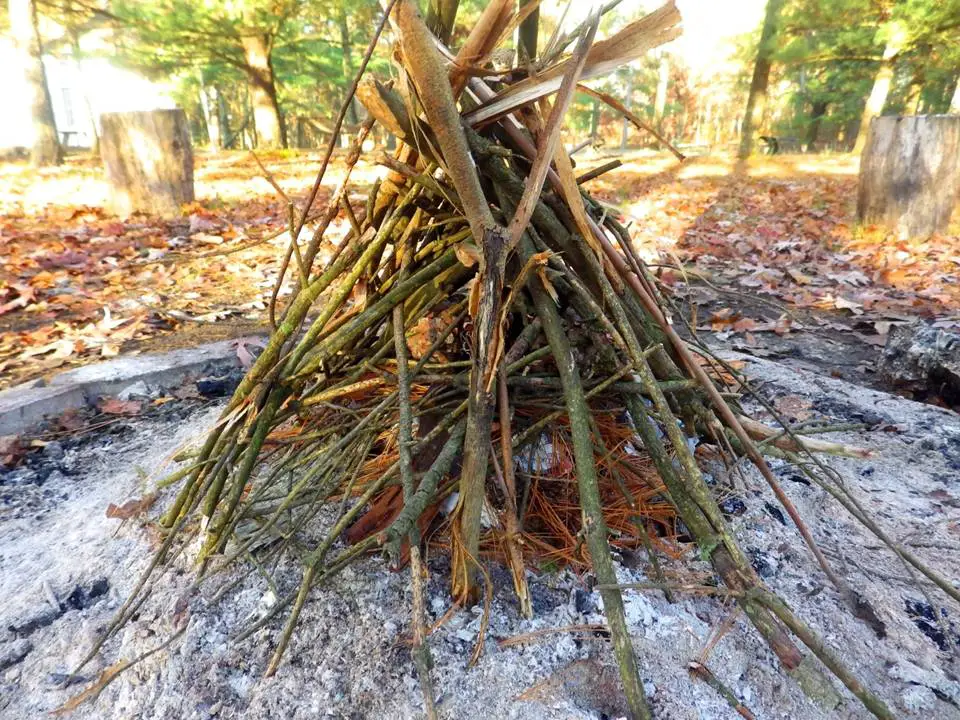
A teepee fire is one of the simplest and most common methods to build a fire in the wilderness. It's a beginner-friendly technique and ideal for general use, such as cooking and warming. However, in wet or windy conditions, this type of fire may not be as effective as some other methods.
What You Will Need
- Dry twigs and small branches for kindling
- Medium-sized wood for fuel
- Larger logs to sustain the fire
- Matches or a fire starter
Step-by-Step Guide to Building a Teepee Fire
- Start by clearing a spot for your fire. Ensure it is away from trees, bushes, or anything that can catch fire.
- Create a fire bed with some dry leaves or bark.
- Lay your kindling in the middle of your fire bed.
- Arrange your medium-sized wood in a teepee shape over the kindling.
- Ignite the kindling with your matches or fire starter.
- Once the fire is established, add larger logs to keep the fire burning longer.
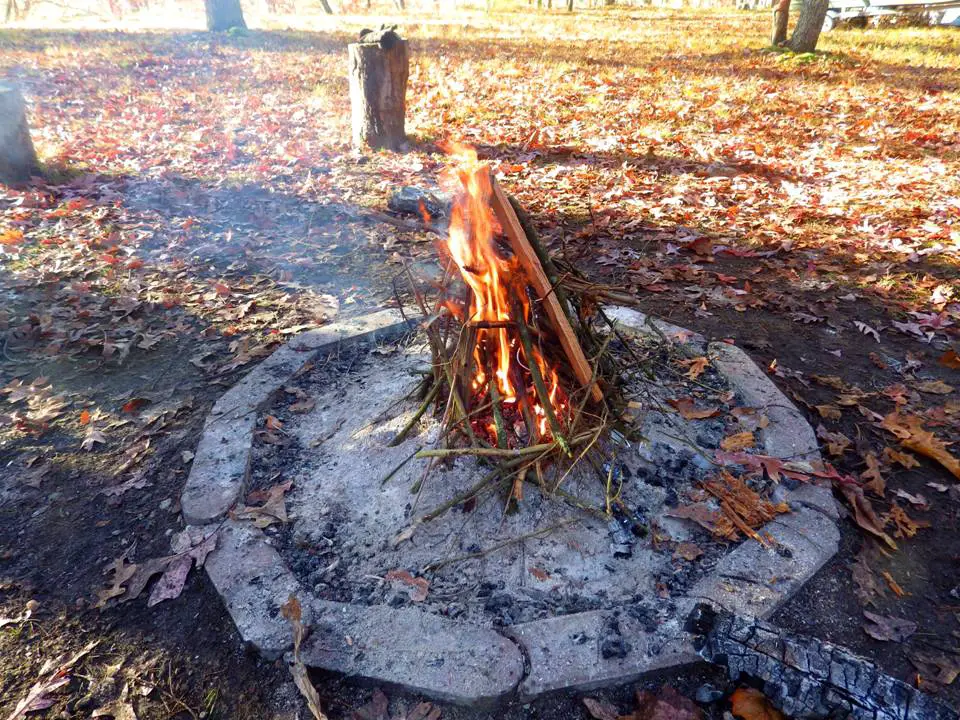
The teepee method is most effective in calm and dry conditions. In windy or wet environments, consider other fire-building techniques such as the Swedish torch or pyramid fire, which are better suited to these conditions.
2. Lean-To Fire
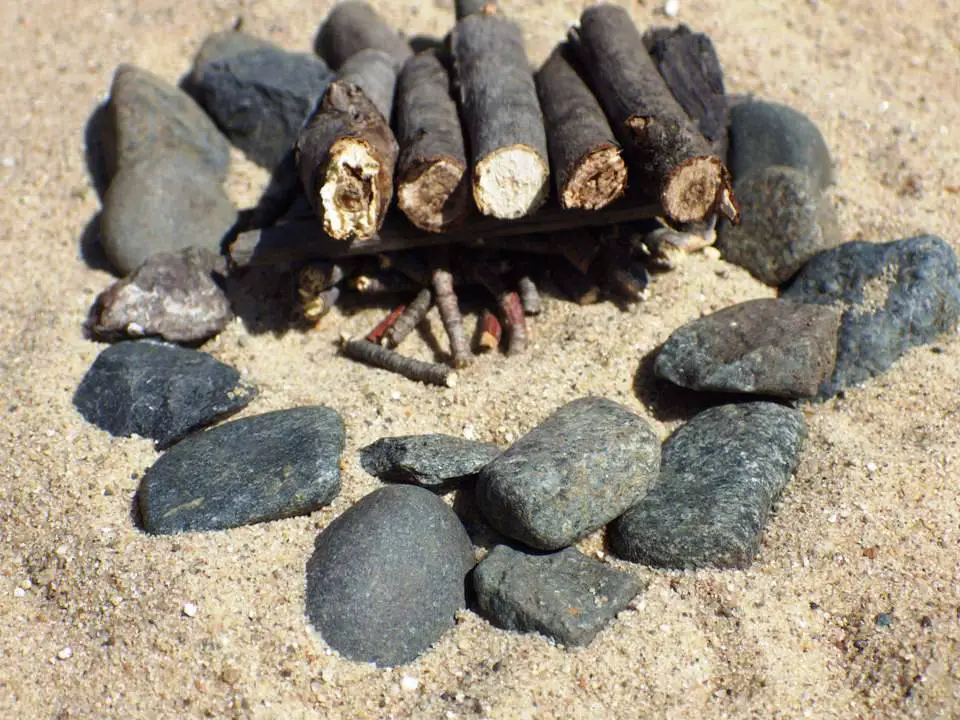
A Lean-To fire is another popular fire-building technique, especially useful in windy conditions as it uses the wind to its advantage. The structure shields the fire from one side, allowing the wind to feed oxygen to the fire from the other. However, this method may not be as effective in calm conditions or when the wind direction keeps shifting.
What You Will Need
- Dry, thin twigs for kindling
- Medium to large-sized logs
- A long, sturdy piece of wood to serve as the lean-to
- Matches or a fire starter
Step-by-Step Guide to Building a Lean-To Fire
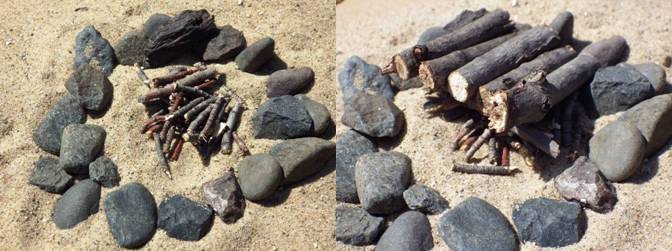
- Start by clearing a spot for your fire. As always, make sure it is away from trees, flammable vegetation, or any fire hazards.
- Lay the long, sturdy piece of wood on the ground at an angle, with one end on the ground and the other end resting on a log or rock. This will serve as your lean-to.
- Place your kindling underneath the lean-to, ensuring there's enough room for airflow.
- Lean your medium-sized logs against the lean-to, creating a sloped wall.
- Ignite the kindling with your matches or fire starter. As the fire grows, it will catch onto the larger logs.
- Add more logs as needed, ensuring they are leaning against the lean-to and not smothering the fire.
The Lean-To method is ideal when the wind is consistent in one direction. If it's calm or the wind is changing directions, consider other fire-building techniques such as the Teepee or the Dakota Fire Hole.
3. Log Cabin Fire
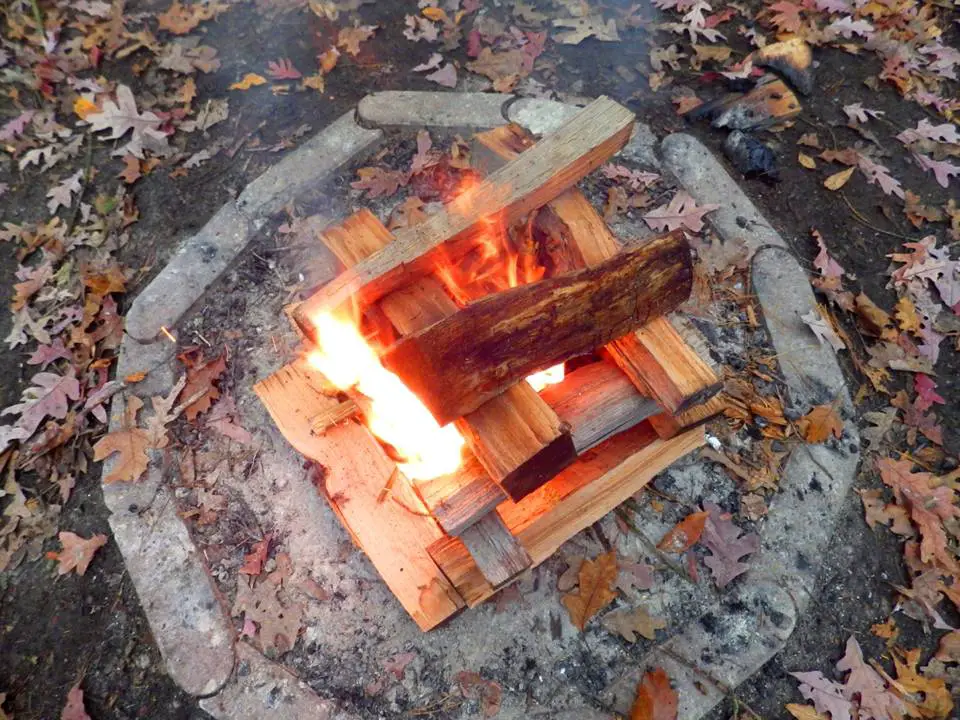
The Log Cabin fire, as the name suggests, is a fire-building technique that utilizes a structure reminiscent of a log cabin. This method is characterized by its stability, long burn time, and high heat output, making it ideal for cooking or keeping warm in harsh weather.
What You Will Need
- Dry, thin twigs for kindling
- Medium to large-sized logs
- Matches or a fire starter
Step-by-Step Guide to Building a Log Cabin Fire

- Begin by preparing your fire area. Distance from flammable material is crucial to prevent accidental fires.
- Set up a small Teepee fire in the center of your fire spot, using the kindling. This will act as the innermost part of your Log Cabin fire.
- Lay two larger logs parallel to each other on either side of your Teepee fire, leaving some space in between for airflow.
- Lay two more logs perpendicular to your first two logs, creating a square shape. The Teepee fire should be enclosed within this square.
- Continue stacking logs in this manner, alternating the direction with each layer and gradually reducing the size of the logs as you build upwards, similar to a log cabin.
- When your structure is stable and sizable, ignite the Teepee fire with your matches or fire starter. The fire will slowly spread to the larger logs, generating a steady, long-lasting fire.
- Add more logs as needed, maintaining the log cabin structure.
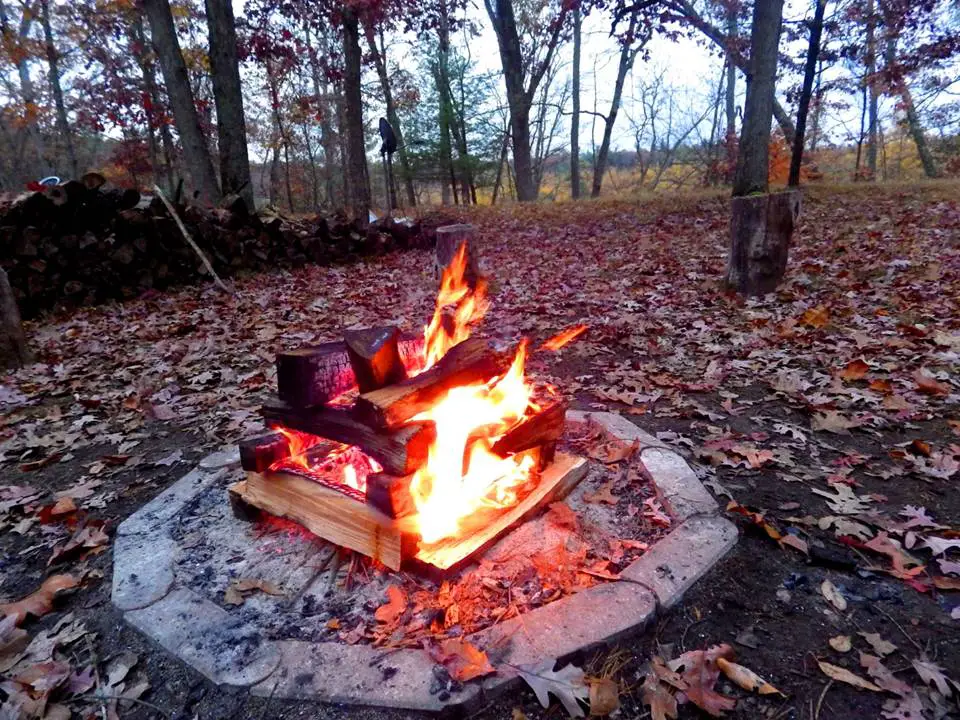
The Log Cabin method is most beneficial when you need a steady, long-lasting fire, perfect for cooking or heating. If the situation requires a quick, large fire or if the wind conditions are unfavorable, consider using the Lean-To or Teepee methods.
4. Star Fire Method
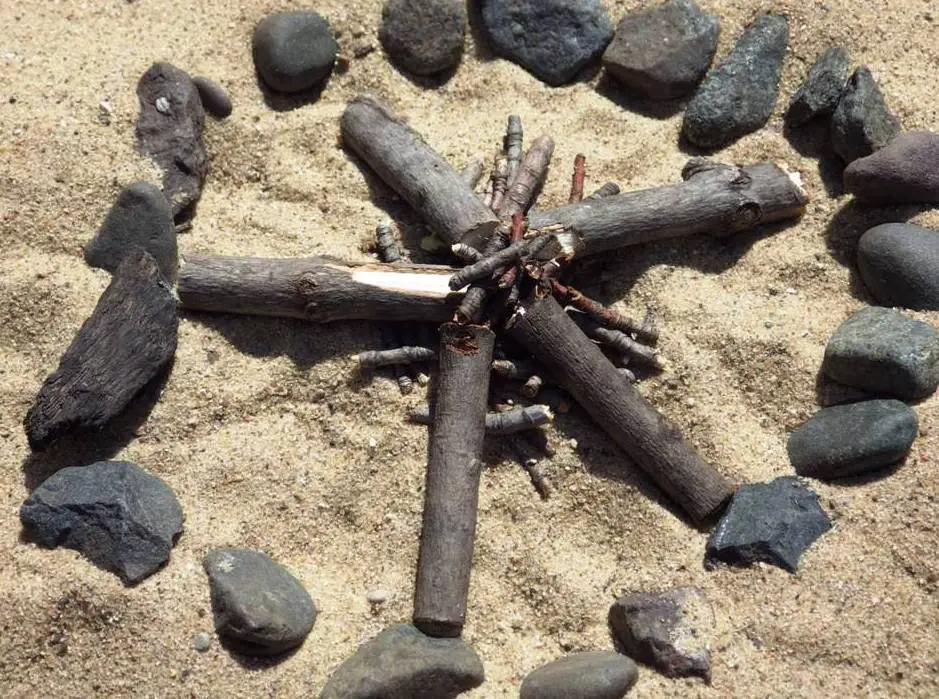
A Star Fire, often referred to as the Indian Fire, is another effective method for building a controlled and sustainable fire. Resembling the shape of a star, this fire layout offers the advantage of low maintenance and a controlled burn rate.
What You Will Need
- Dry, thin twigs for kindling
- 5-6 pieces of large firewood
- Matches or a fire starter
Step-by-Step Guide to Building a Star Fire
- Prepare a clear fire area, ensuring you're at a safe distance from any flammable materials.
- Create a small Teepee fire at the center of your fire spot with the kindling, which will act as the heart of the Star fire.
- Arrange your large pieces of firewood in a star pattern, with one end of each log meeting at the center of the Teepee fire.
- Ignite the Teepee fire with your matches or fire starter. The fire will gradually burn toward the ends of the logs.
- As the fire burns, push the logs towards the center to maintain the fire. The slower you push them in, the slower the fire burns.
The Star Fire method is ideal when you're aiming for a low-maintenance fire, perfect for a relaxed, lengthy outdoor experience. However, it may not be the best choice if you need a quick, high flame or if you're dealing with windy conditions, as it burns slower and less aggressively than methods like the Teepee or Lean-To.
5. Dakota Fire Hole
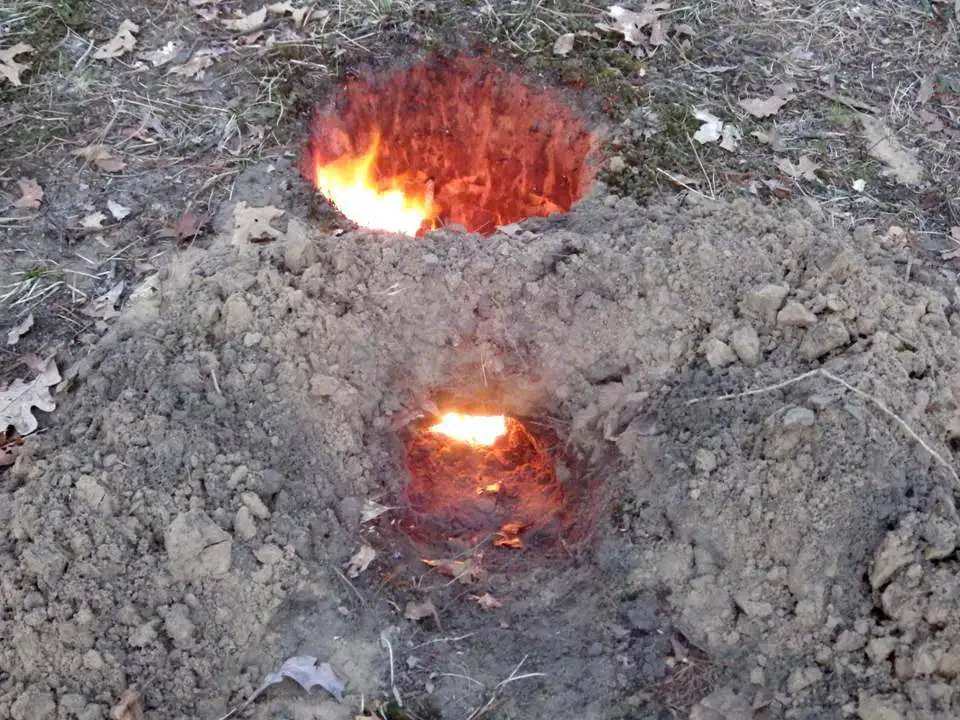
A Dakota Fire Hole is a highly efficient and effective fire layout, primarily known for its minimal visibility and smoke production. Favorable in survival situations where discretion is paramount, this fire method also excels in high wind conditions and facilitates effective heat for cooking.
What You Will Need
- A digging tool (shovel or a stick)
- Dry sticks, and twigs for kindling
- Firewood
- Matches or a fire starter
Step-by-Step Guide to Building a Dakota Fire Hole

- Select an area clear of flammable materials. Consider the wind direction; the airflow will aid in fueling the fire.
- Using your digging tool, dig a hole about 1 foot deep and a foot in diameter, ensuring the hole's walls are smooth and compact.
- Dig a smaller hole, about 6 inches in diameter, a foot away from your first hole. This second hole should connect to the first hole at the bottom forming a tunnel.
- Place your kindling into the larger hole and ignite it with your matches or fire starter.
- As the kindling starts to burn, add more firewood to increase the size of the fire.
The Dakota Fire Hole is ideal in conditions where concealment is necessary – both visual and olfactory. Its design allows for efficient fuel consumption, making it a perfect choice where resources are limited.
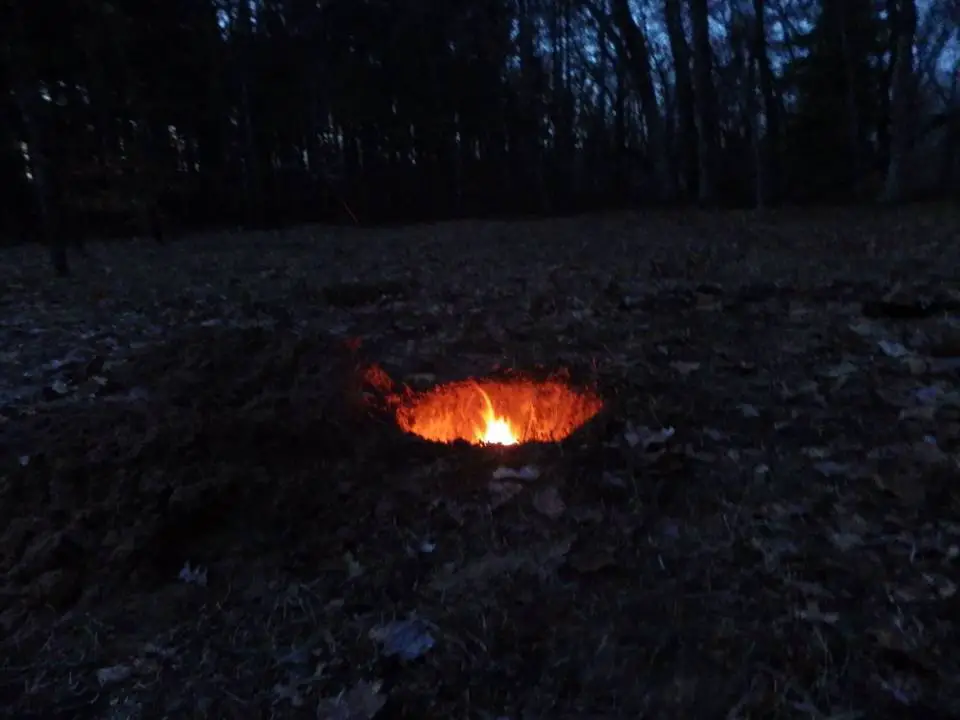
This method may not be suitable in locations with dense, rocky, or hard ground that makes digging difficult. Also, it's labor-intensive to set up compared to the Star Fire or Teepee methods.
6. Upside-Down Fire
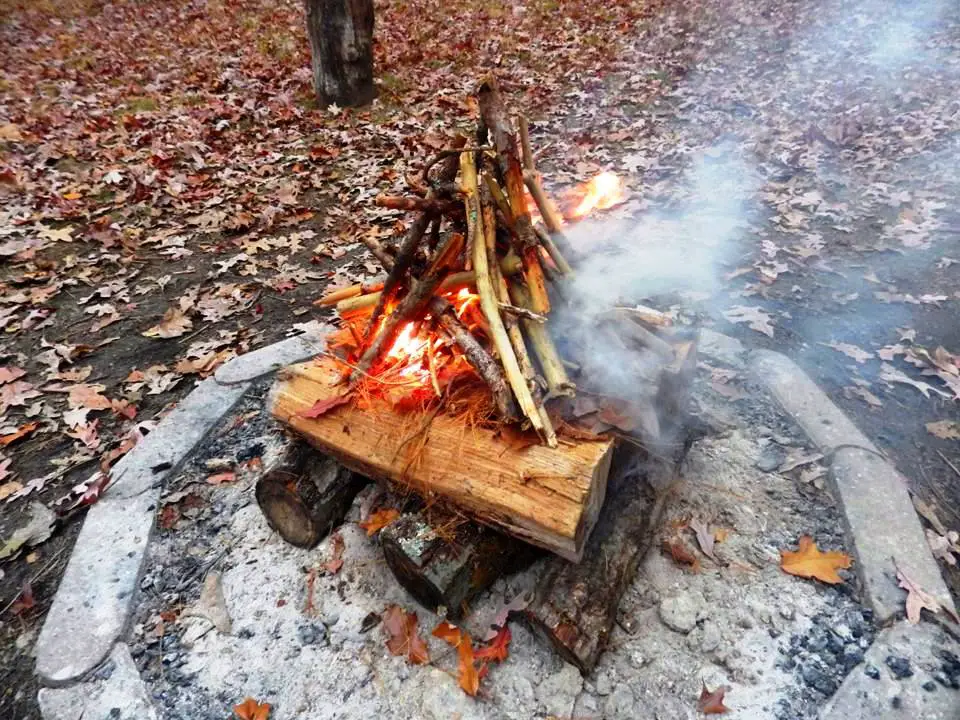
An Upside-Down Fire, also known as a “top-down fire,” is a fire-building method where the largest logs are on the bottom of the fire and the smallest pieces of wood are on the top. The Upside-Down Fire burns steadily for hours with little to no maintenance, making it an ideal choice for a campfire, fireplace, or even a cooking fire.
What You Will Need
- Large logs
- Medium-sized logs
- Small logs or large sticks
- Kindling
- Tinder
- Matches or a fire starter
Step-by-Step Guide to Building an Upside-Down Fire

- Start by placing the large logs in a flat, square layer at the base.
- Then, on top of this layer, place a row of medium-sized logs perpendicular to the first layer.
- Continue with a layer of small logs or large sticks, followed by a layer of kindling.
- Finally, add your tinder on the top layer, ensuring it is compact and dry for easy lighting.
- Light the tinder with your matches or fire starter and wait for the fire to gradually burn down from the top, igniting the layers below.
The Upside-Down Fire is perfect for situations where you need a fire to last for a long time without maintenance, such as overnight campfires or when you are busy with other tasks.
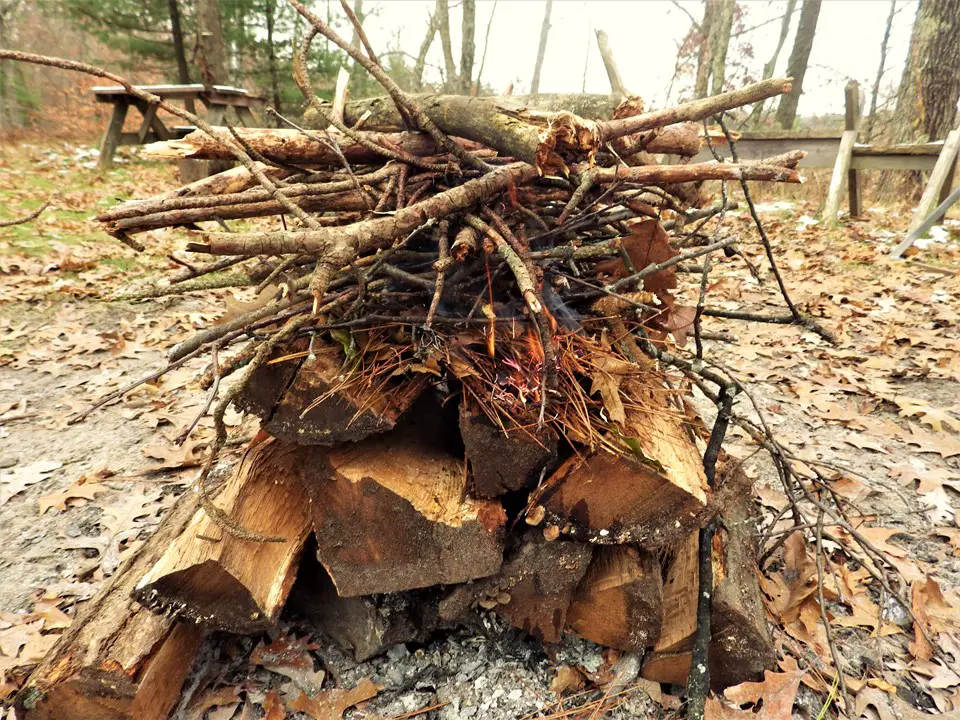
An upside down fire may not be the most effective method if you need immediate high heat for cooking or if your fuel is limited since it requires a significant amount of wood. The setup is also more time-consuming compared to other methods like the Teepee or the Dakota Fire Hole.
7. Swedish Fire Torch
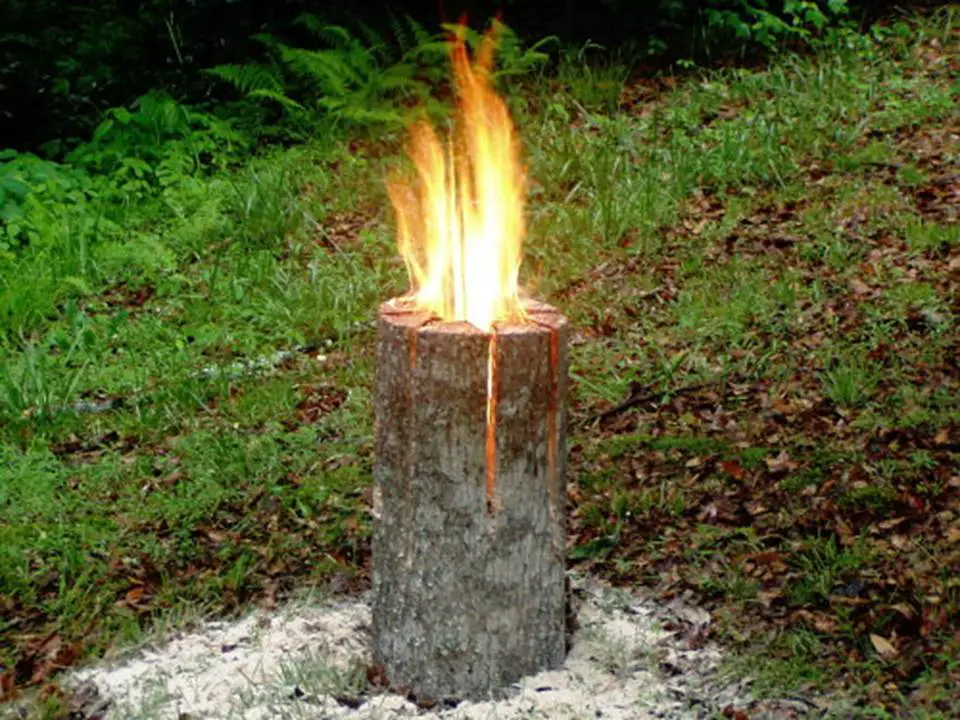
A Swedish Fire Torch, also known as a “Swedish Torch” or “Swedish Candle,” is a self-sustaining campfire method that is constructed using a single log. The distinctive feature of this method is that it burns vertically, providing a flat surface for cooking, and it also requires less fuel than traditional campfires.
What You Will Need
- One large, dry log (preferably hardwood)
- Saw or axe
- Kindling
- Tinder
- Matches or a fire starter
Step-by-Step Guide to Building a Swedish Fire Torch

- Start by cutting a cross into the top part of your log. The cuts should extend about three-quarters of the way down the log.
- Stuff the cuts with tinder and kindling, ensuring they reach deep into the log.
- Light the kindling and tinder with your matches or Firestarter. The fire will burn from the top down, drawing air in through the cuts and creating a self-sustaining, controlled burn.
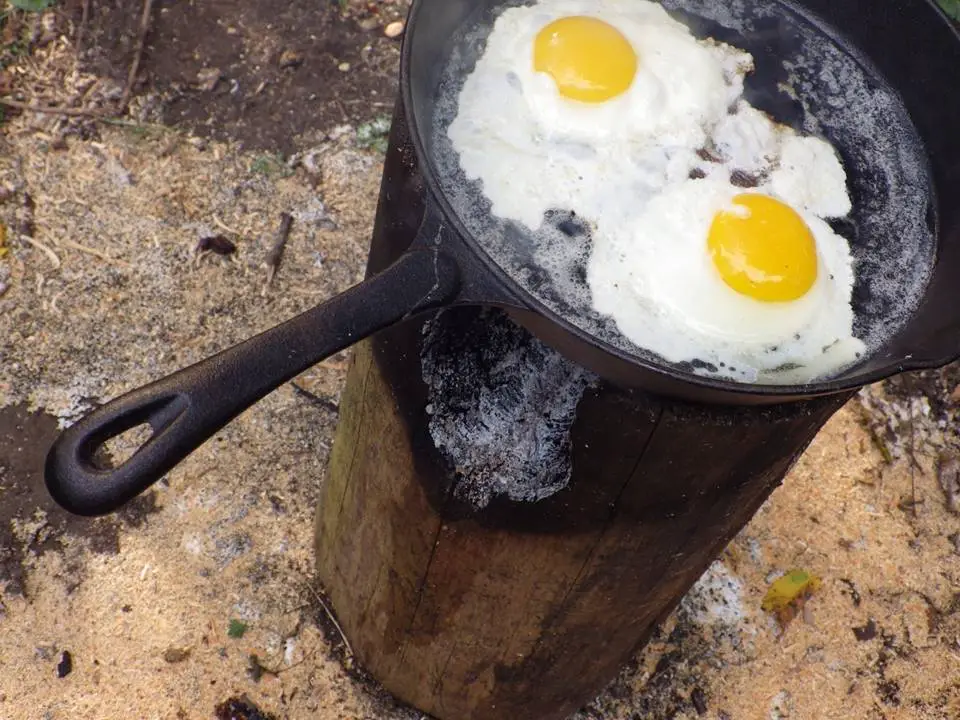
The Swedish Fire Torch is an excellent choice when you need to cook food or boil water because the burning log provides a natural ‘stove-top.' It also works well when the ground is wet since the fire is elevated.
While it's an efficient method, it's not ideal for situations requiring a large, warm fire for heat or light, such as a large campfire. Additionally, this method demands a log of a certain size and may not be feasible if only smaller pieces of wood are available.
8. Keyhole Fire
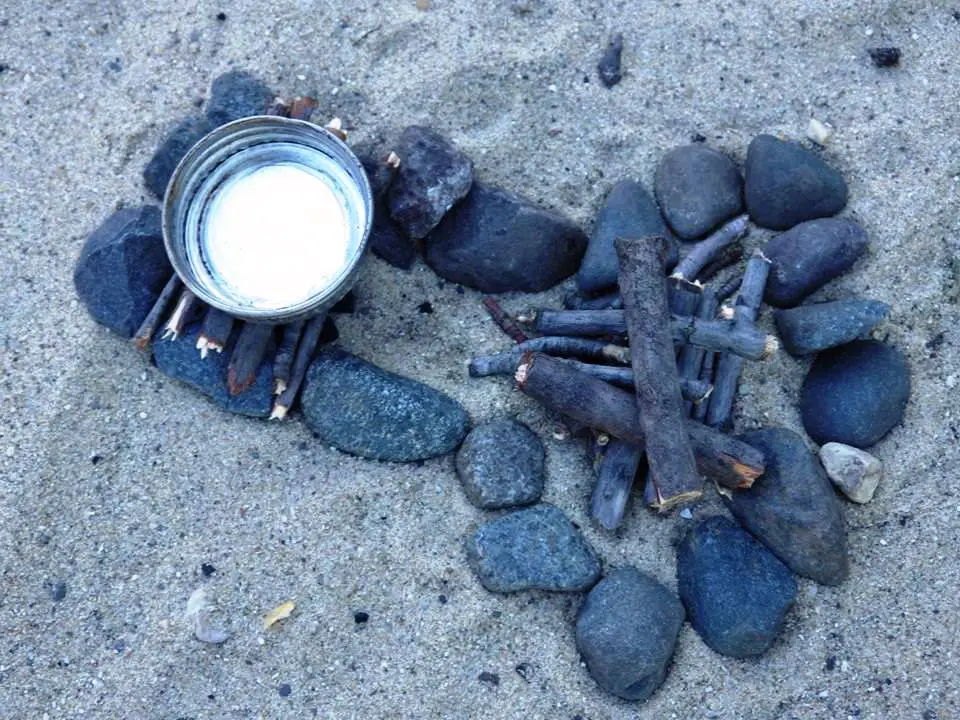
A Keyhole Fire is a versatile campfire method that offers a fantastic solution for those needing both a warm open fire and hot concentrated heat for cooking. This fire setup is characterized by an area for the fire itself and a separate section for coals to be used for cooking.
What You Will Need
- A shovel or trowel
- Dry leaves, sticks, or grass (tinder)
- Sticks less than 1 inch around (kindling)
- Logs less than 5 inches around and logs around 3 feet long (fuel)
- Matches or a fire starter
Step-by-Step Guide to Building a Keyhole Fire
- Use your shovel or trowel to dig a circle about 2 feet in diameter and about 1 foot deep. This will be your fire pit.
- Dig a smaller hole attached to the circle on one side. This keyhole shape allows you to have a fire and then pull coals into the smaller hole for cooking.
- Fill the circular section with tinder, then kindling, and then larger logs. Remember to structure the layers appropriately, allowing air to pass through.
- Light the tinder with your matches or firestarter. As the fire burns, move hot coals into the smaller hole.
- Place a grill or pot over the smaller hole for cooking.
The Keyhole Fire is perfect when you require both heat and a hot, controlled cooking area. The keyhole section can be used to efficiently cook meals while the main fire keeps your campsite warm.
This method can be labor-intensive, requiring constant attention to move the coals and maintain the fire. It also might not be suitable in areas where digging is not allowed or feasible.
Final Thoughts
Fire building is a skill that can be acquired with practice and patience. While it may seem daunting at first, breaking down the steps and tackling them one at a time allows anyone to successfully light a fire. To ensure success when using any of these 8 methods, remember the 3 fundamental principles; providing ample fuel, air, and ignition sources to get your fire going.
Like this post? Don't Forget to Pin It On Pinterest!
You May Also Like:



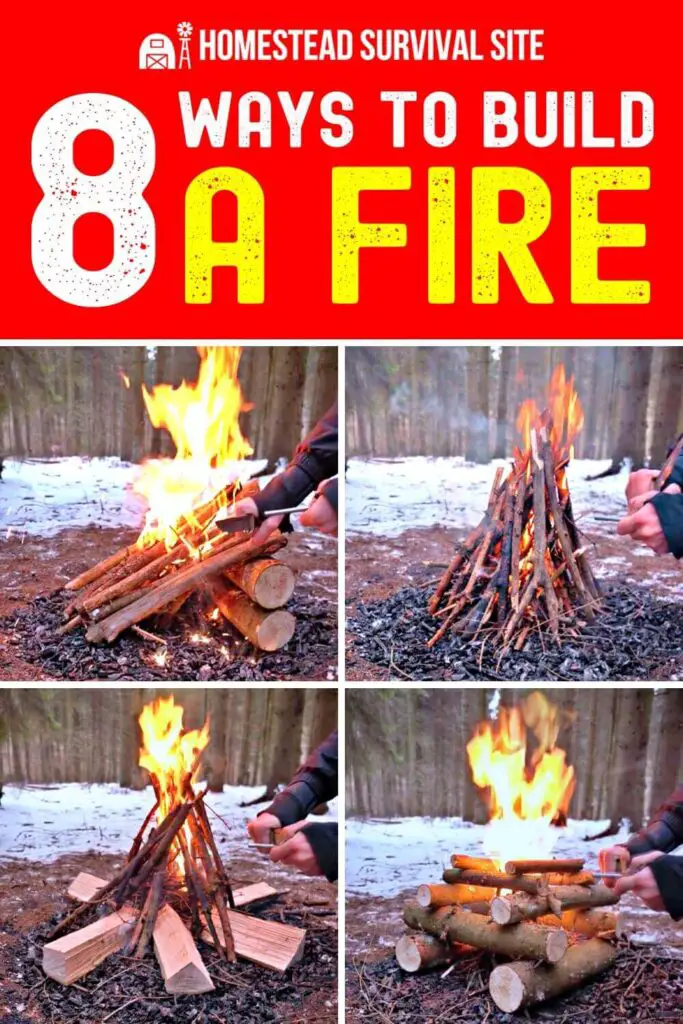

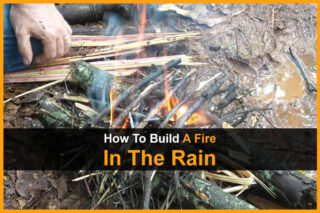


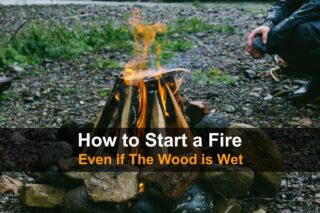


This was awesome. Like to think myself a pro fire starter; Bushcrafter. These are great examples of versatile fire making.